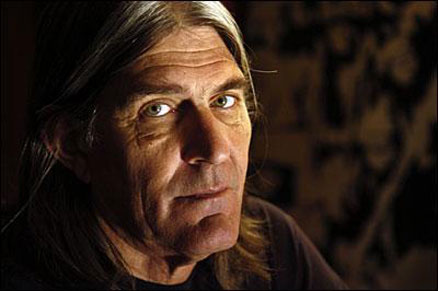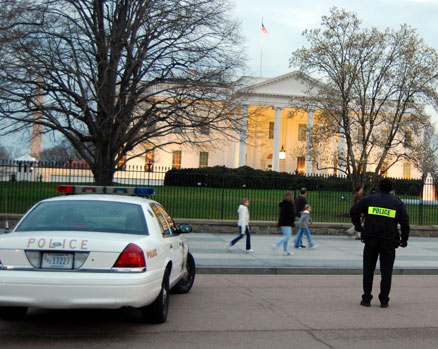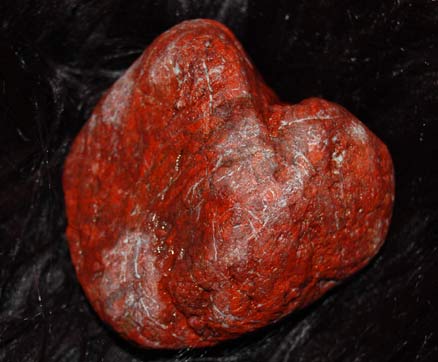
I’m sure you’ve seen the Sweet Surprise commercials. There are several to target different consumer groups, but all involve a person #1 expressing hesitation at the offer of a high fructose corn syrup-laden “treat” and a smug HFCS-pusher asking sneeringly, “Oh yeah? Well, what’s so bad about HFCS?”
In the ads, person #1 hems and haws and has trouble articulating a satisfactory reply. HFCS person pats person #1 on the head condescendingly and says, “I thought so. Don’t worry, high fructose corn syrup is just like sugar. In moderation, it’s part of a healthy diet.” Person #1 quietly accepts the offered Frankenfood while DDB Chicago, the creator of the ads, and the Corn Refiners Association, creator of the poison, high five at their clever game, played to the grave detriment of the confused end-consumer.
I’m going to enlist my fledgling filmmaker son to help me produce a commercial of my own. The script will look something like this:
———-
Corporate Shill Cornelia: High fructose corn syrup is just like sugar. In moderation, it’s perfectly peachy for you.
Vigilant Consumer Veronica: Oh, no, Cornelia. Fortunately for you, I have a PhD in molecular biology and can help you understand how terribly you’ve been duped.
When an individual consumes sugar, the pancreas responds by increasing the production of insulin which enables the glucose in the bloodstream to be transported into cells and used as energy. The body also increases the production of leptin, a hormone that helps regulate the appetite and send a satiety signal to the body. This tells us that we’ve had enough to eat, a crucial component in the pursuit of “moderation.”
HFCS, in contrast, doesn’t cause insulin or leptin production nor increased cellular energy. You see, every cell in the body can metabolize glucose, but HFCS is only processed in the liver, like fats and alcohol, where it’s converted into triglycerides. The “energy” locked in HFCS stays largely inaccessible to the body, and most people know that elevated triglycerides — which we commonly refer to as high cholesterol — can lead to a whole host of health problems, including hardened arteries and heart attack. With HFCS, the moderation mechanism is never triggered; we never feel satisfied. Maybe this explains why 30% of American children are obese and sluggish, and why Lipitor, which is used to treat high cholesterol, is the best-selling drug in the country today. With approval by the American Academy of Pediatrics, doctors are now prescribing it to children as young as 8.
Cornelia, I know this is a lot to digest and, believe me, I’ve only begun to scratch the surface. The dangerous way HFCS is made, the genetically-modifed corn and enzymes that are used in its production, the fatty deposits and liver cirrhosis that may result from its over-consumption, the criminal complicity of the FDA, even the tale of interference with free-market mechanisms that led to its prevalence in the food supply, are all feature-length films in themselves.
Please, Cornelia, take my advice. Get educated about HFCS. Read labels. Protect yourself and your family from high fructose corn syrup. It truly is deadly, and there’s no smug satisfaction in that for me.
[hugs weepy Cornelia, hands her a tissue. children run into scene, grab offered apples, run off laughing and playing. pan to crushed box of Fudgsicles on picnic table, melting, chalk outline, puddle of congealed goo, like blood, surrounding] CUT.

 Yesterday Judge Larry Naves vacated the jury verdict in the Ward Churchill trial and refused to compel CU to reinstate Churchill saying that to do so would send a message to students that the University of Colorado “tolerates academic misconduct.” This, despite the fact that the jury found that charges of academic misconduct were made in order to silence Churchill without appearing to violate his free speech rights and wrongly fired him based on the trumped up charges.
Yesterday Judge Larry Naves vacated the jury verdict in the Ward Churchill trial and refused to compel CU to reinstate Churchill saying that to do so would send a message to students that the University of Colorado “tolerates academic misconduct.” This, despite the fact that the jury found that charges of academic misconduct were made in order to silence Churchill without appearing to violate his free speech rights and wrongly fired him based on the trumped up charges. Tonight is Colorado Springs’ first annual
Tonight is Colorado Springs’ first annual 







 Do you have an uneasy sense that someone’s trying to pull the wool over your eyes? Does the hullabaloo over a looming swine flu pandemic seem a bit overblown? The World Health Organization (WHO) has raised the
Do you have an uneasy sense that someone’s trying to pull the wool over your eyes? Does the hullabaloo over a looming swine flu pandemic seem a bit overblown? The World Health Organization (WHO) has raised the  During the kids’ Snow Break last week, we chanced to visit the Denver Art Museum’s
During the kids’ Snow Break last week, we chanced to visit the Denver Art Museum’s 

 Closing arguments will be heard this morning in the Ward Churchill trial and then the case goes to the (very young and earnest) jury.
Closing arguments will be heard this morning in the Ward Churchill trial and then the case goes to the (very young and earnest) jury.
 This weekend the kids and I watched Charlie Chaplin’s brilliant 1940 movie The Great Dictator. The film was released before the United States’ entry into World War II when our country was still at peace with Nazi Germany. Charlie Chaplin was an outspoken critic of Nazism and fascism while most Americans were either ignorant of or complacent about European goings-on. The Great Dictator is ingenious in its inexorable skewering of Hitler and Mussolini, done with complete levity and irreverance, a task made possible by Chaplin’s lack of foresight into the coming Holocaust. He admits he likely wouldn’t have made the film had he known about Hitler’s final solution.
This weekend the kids and I watched Charlie Chaplin’s brilliant 1940 movie The Great Dictator. The film was released before the United States’ entry into World War II when our country was still at peace with Nazi Germany. Charlie Chaplin was an outspoken critic of Nazism and fascism while most Americans were either ignorant of or complacent about European goings-on. The Great Dictator is ingenious in its inexorable skewering of Hitler and Mussolini, done with complete levity and irreverance, a task made possible by Chaplin’s lack of foresight into the coming Holocaust. He admits he likely wouldn’t have made the film had he known about Hitler’s final solution. I posted some photos from yesterday’s Carnivale parade in Manitou on Not My Tribe’s
I posted some photos from yesterday’s Carnivale parade in Manitou on Not My Tribe’s  Israel’s plan is to speak its truth to thousands, involve many and select and challenge a few for the purpose of reaching the world with their gospel. The result of the campaign is clear. Preying upon our hungry egos and hopeful self-importance, the Zionists have effectively co-opted Not My Tribe for their own purposes.
Israel’s plan is to speak its truth to thousands, involve many and select and challenge a few for the purpose of reaching the world with their gospel. The result of the campaign is clear. Preying upon our hungry egos and hopeful self-importance, the Zionists have effectively co-opted Not My Tribe for their own purposes. Eric and I had fun in Costa Rica playing with a rainbow in the hills outside Santa Elena. We traveled down a narrow bumpy road until the bright double rainbow appeared to end in the backyard of the only house in sight. An inspiring illusion to be sure, but still only an illusion. Rainbows are like that, aren’t they? Manipulable to a point; there, but not, depending on your vantage point; seen by all, fully comprehended by few. As kids we dreamed of finding the promised pot of leprechaun gold, but we never could quite get there. The promise forever remained only a promise.
Eric and I had fun in Costa Rica playing with a rainbow in the hills outside Santa Elena. We traveled down a narrow bumpy road until the bright double rainbow appeared to end in the backyard of the only house in sight. An inspiring illusion to be sure, but still only an illusion. Rainbows are like that, aren’t they? Manipulable to a point; there, but not, depending on your vantage point; seen by all, fully comprehended by few. As kids we dreamed of finding the promised pot of leprechaun gold, but we never could quite get there. The promise forever remained only a promise. Military customers in Colorado Springs were angered by a picture of Barack Obama on a sign outside the Pete Field Commissary announcing a
Military customers in Colorado Springs were angered by a picture of Barack Obama on a sign outside the Pete Field Commissary announcing a 














 It was one of the greatest heists in history. The scene? London, 1660. The perpetrator? England’s King Charles the II. The loot? All the gold he could con out of the country’s goldsmiths, bankers and businessmen. The tool?
It was one of the greatest heists in history. The scene? London, 1660. The perpetrator? England’s King Charles the II. The loot? All the gold he could con out of the country’s goldsmiths, bankers and businessmen. The tool?
 The whining and hang-wringing about the “credit crunch” is getting on my nerves. It was this supposed crisis that led to the $700 billion bailout and we’re told every day that it must be solved quickly, no matter the cost, or we’re toast. But why? How many of us are actively seeking credit right now? Surely the developers and retailers want us to have lots and lots of it so we can keep hyper-consuming their goods; the bankers want us to have it so they can collect their interest and fees but, seriously, is free-flowing credit what the American public needs right now? Living beyond our means is what caused the credit meltdown in the first place!
The whining and hang-wringing about the “credit crunch” is getting on my nerves. It was this supposed crisis that led to the $700 billion bailout and we’re told every day that it must be solved quickly, no matter the cost, or we’re toast. But why? How many of us are actively seeking credit right now? Surely the developers and retailers want us to have lots and lots of it so we can keep hyper-consuming their goods; the bankers want us to have it so they can collect their interest and fees but, seriously, is free-flowing credit what the American public needs right now? Living beyond our means is what caused the credit meltdown in the first place!